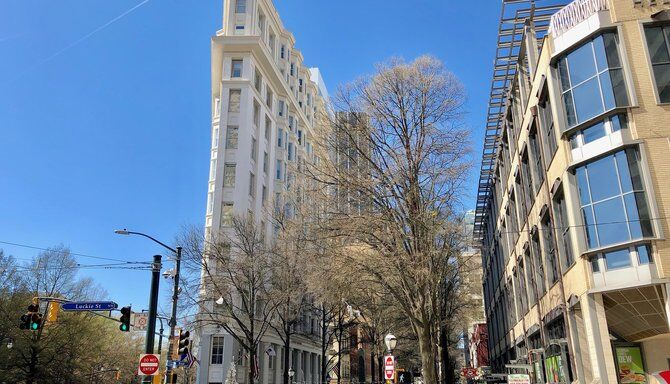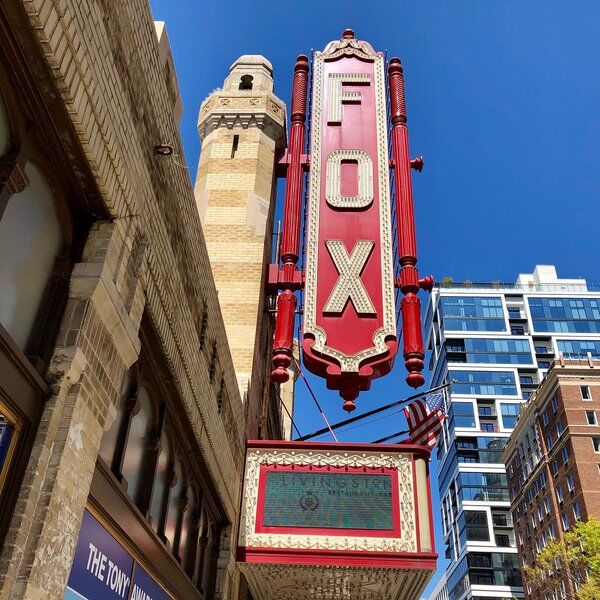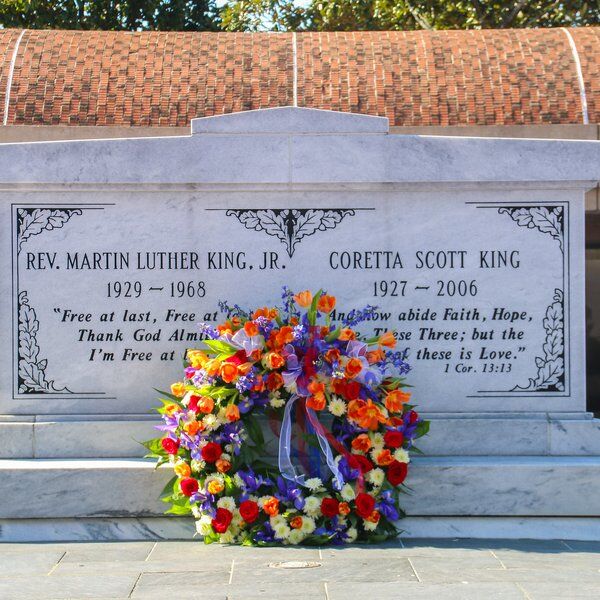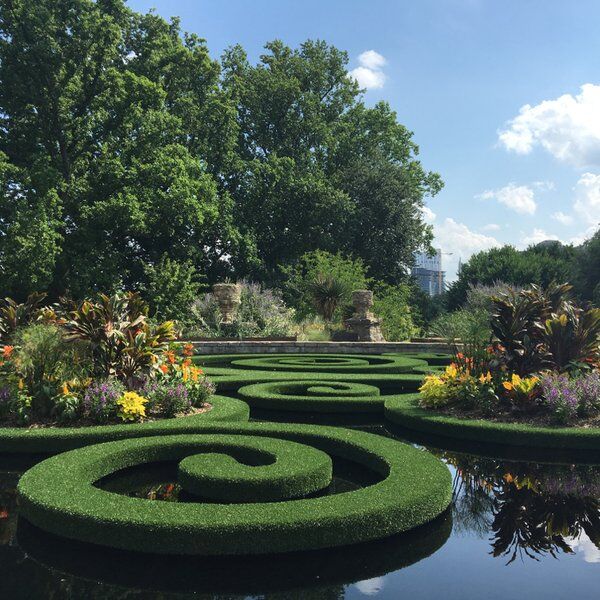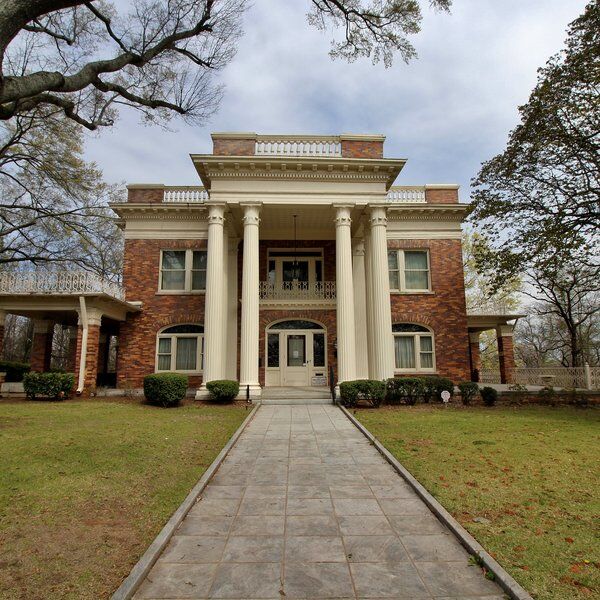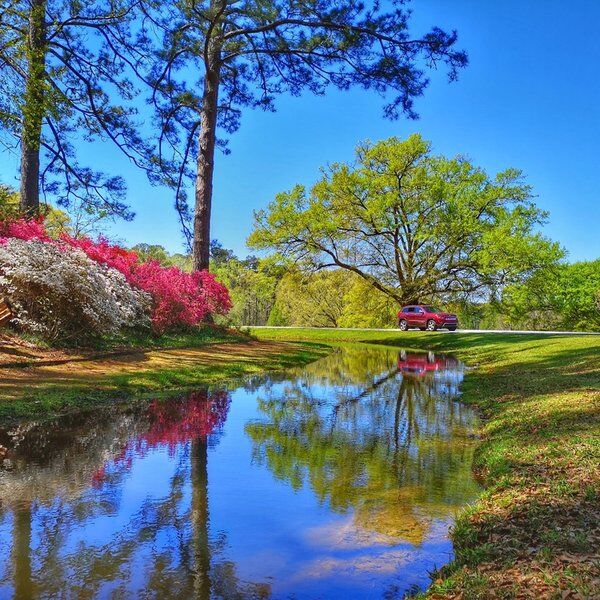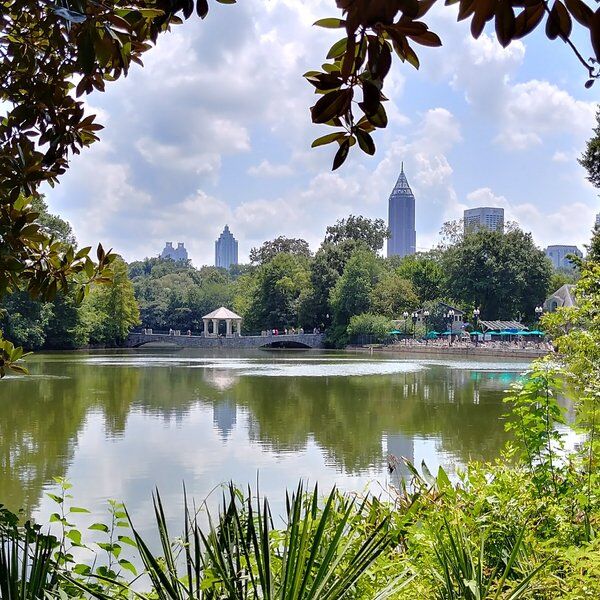Discover the Fairlie-Poplar District
The Fairlie-Poplar District in Atlanta remains relatively unknown to many. Home to Atlanta’s largest concentration of historic urban buildings, this district provides a fascinating glimpse into the city’s past while continuing to thrive as a vibrant part of its downtown culture. The district’s unique look, which blends old-world elegance with modern urbanity, has led to it becoming a popular filming location for movies and television shows. This adds another layer of interest for visitors, as they can explore the real-life settings of their favorite films and shows as they eat, shop, and drink their way around the district.
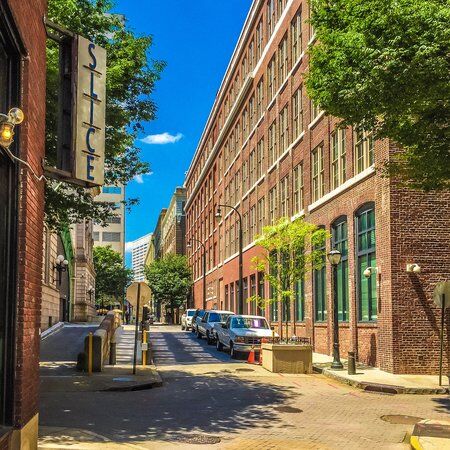
History of Commerce and Culture in the Fairlie-Poplar District
The Fairlie-Poplar District began to take shape in the late 19th century when Atlanta emerged as a major commercial hub for Georgia and the Southeast. Following the devastation of the Civil War, Atlanta was eager to rebuild and grow.
Farilie-Poplar was promoted as "Atlanta's new modern fireproof business district," due to its use of non-combustible materials like brick, stone, and cast iron in construction. As Atlanta’s central business district expanded northward, Fairlie-Poplar became home to a variety of wholesale and retail operations, along with public agencies and business offices.
As Atlanta continues to grow and evolve into the future, the Fairlie-Poplar District is poised to remain a key part of the city’s cultural and commercial landscape.

Exploring the Architectural Styles of Fairlie-Poplar
Walking through the Fairlie-Poplar District today, many buildings from the late 19th and early 20th centuries still stand. Exploring them exposes visitors to a diverse range of architectural styles from Chicago School, Renaissance Revival, Neoclassical, and Commercial to Art Deco, Georgian Revival, and Victorian architecture.
- Chicago School: Known for its use of steel-frame construction, large plate glass windows, and minimal ornamentation, the Chicago School style represents a shift from traditional masonry construction, allowing for taller buildings with more natural light. The style can be witnessed in buildings like the Rhodes-Haverty Building.
- Renaissance Revival and Neoclassical: These styles are characterized by their grand, symmetrical designs, often with ornate detailing such as columns and pediments. The Healey Building is a prime example, with classical Beaux-Arts elements.
- Art Deco: The William-Oliver Building, Atlanta’s first Art Deco high-rise, showcases the sleek, geometric lines and stylized forms typical of the Art Deco movement. This style was a symbol of modernity and progress in the early 20th century.
- Victorian: The Victorian style, with its intricate details and eclectic design, can be seen in some of the older buildings in the district.
These styles highlight the aesthetic preferences of different time periods and reflect advancements in building technology, such as the transition from load-bearing masonry to steel and concrete framing.
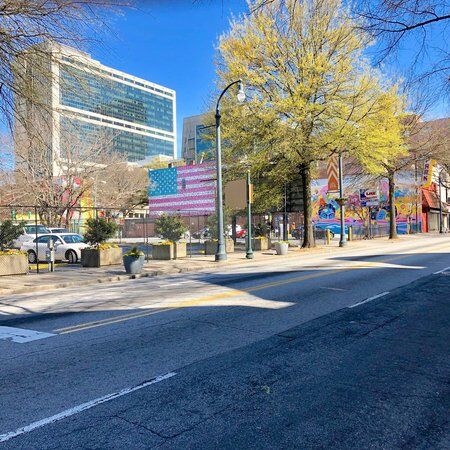
Landmark Buildings in the Fairlie-Poplar District
Several buildings in the Fairlie-Poplar District stand out for their historical significance and architecture:
- The Flatiron Building: This is one of the district’s most iconic structures, completed in 1897—five years before its more famous New York counterpart. The 11-story building has a distinctive triangular shape which made it unique for its time.
- The Healey Building: Often referred to as "The Queen of Atlanta," the Healey Building was the last major skyscraper constructed in Atlanta before World War I. Completed in 1914, this 16-story Gothic-style tower has been repurposed into condominiums and commercial spaces.
- The U.S. Court of Appeals Building: Designed by James Knox Taylor in 1911, this Beaux-Arts building resembles a Renaissance palazzo, symbolizing the grandeur and authority of the federal government at the time.
These landmarks are markers of Atlanta’s growth and evolution as a city. Recognized for this significance the Flatiron Building, the Healey Building, and the Empire/C&S Building, are all listed on the National Register of Historic Places.
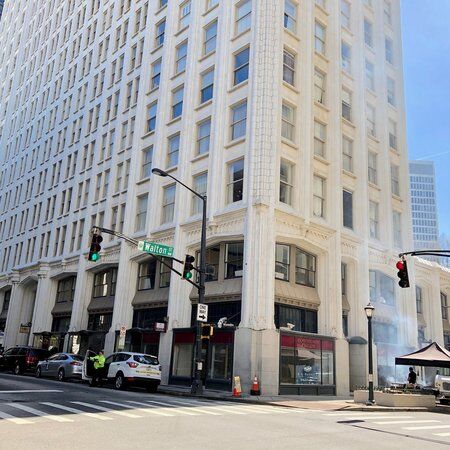
The Arts and Culture Scene at the Fairlie-Poplar District
Fairlie-Poplar is not just a historic district; it’s also a lively center for the arts. The neighborhood is home to several key cultural venues:
- The Tabernacle: Originally built as a church, The Tabernacle has been transformed into one of Atlanta’s most popular concert venues, regularly hosting major national and international acts.
- Rialto Center for the Arts: Located within the district, the Rialto is a leading venue for performing arts in Atlanta, offering everything from jazz and world music to dance and theater. It's this programming that attracts diverse audiences to the Rialto Center for the Arts.
- Balzer Theater at Herren’s: Home to Theatrical Outfit, this theater produces independent plays that receive high praise. The Balzer Theater is known for its commitment to telling stories that resonate with the local community, making it an important cultural venue in the district.
In addition to these venues, the district’s streets are covered in street art and murals, adding a contemporary touch to the old architecture.
To explore more street art murals in Atlanta, click here: Krog Street Tunnel | CityDays.
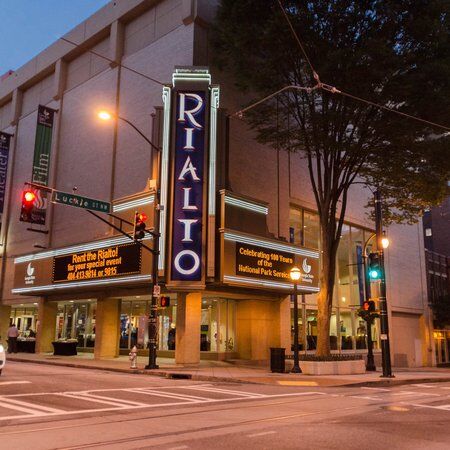
Dining, Nightlife, and Local Businesses
Fairlie-Poplar is a lively district, with a growing residential population and a variety of businesses, including restaurants, retail shops, bars, and offices. The area is particularly popular during lunchtime, when workers and students flock to local eateries.
- Broad Street: This pedestrian-friendly street is a hub for dining and nightlife with a variety of cafes, restaurants, and bars. From casual spots catering to the lunch crowd from nearby offices and Georgia State University to fine evening dining, there’s something for everyone.
- Historic Businesses: Many of the district’s buildings have been repurposed to house modern businesses while retaining their historic charm. For example, the lower floors of the Healey Building are home to galleries, shops, and restaurants, making the area a lively spot to be for residents and tourists.
Tourists are also a common sight, given the district’s proximity to major attractions like the Georgia Aquarium, World of Coca-Cola, and the Centennial Olympic Park.
Revitalizing the Fairlie-Poplar District
To preserve its historic character while adapting to the needs of a modern urban environment, the Fairlie-Poplar District has undergone revitalization efforts in recent years. These efforts have included the restoration of historic buildings, the creation of public art work, the promotion of local businesses, and the improvement of public spaces including sidewalks, green areas, and pedestrianised streets.
Georgia State University’s expansion into the district has also played a crucial role in its revitalization. The university has restored several historic buildings and constructed new ones that blend well with the pre-existing buildings. This has not only enhanced the visual appeal of the area but also brought a new wave of energy and activity to the neighborhood.

Visiting the Fairlie-Poplar District: What You Need to Know
The Fairlie-Poplar District is easily accessible via public transit, with several MARTA rail stations nearby, including Five Points, Peachtree Center, and Dome/GWCC/Phillips Arena/CNN. For those driving, the district is bounded by Centennial Olympic Park on one side and Woodruff Park on another, making it a central location for exploring other downtown attractions.
Tips for Visiting
Here are some tips to make the most of your visit:
- Self-Guided Walking Tour: Start your tour at Woodruff Park, a central point in the district. From there, explore iconic landmarks like the Flatiron Building, the Healey Building, and the U.S. Court of Appeals. Don’t forget to take in the street art and murals along the way.
- Best Time to Visit: The district is lively during the day, especially around lunchtime when the local restaurants fill up. For a quieter experience, consider visiting in the early morning or late afternoon.
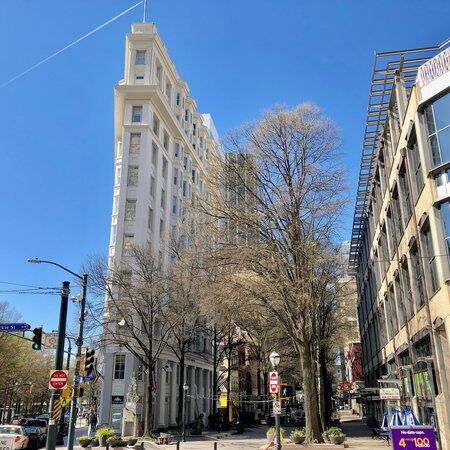
Explore Beyond Fairlie-Poplar with CityDays
After exploring the rich history and vibrant culture of the Fairlie-Poplar District, why not extend your adventure with CityDays? We offer scavenger and treasure hunt tours across Atlanta and around the world, perfect for team-building exercises or just a fun day out with friends and family.
Discover hidden gems, solve puzzles, and learn fascinating facts on our From The Ashes Atlanta hunt. Whether you’re a local or a visitor, CityDays will help you uncover the secrets of Atlanta and beyond.
